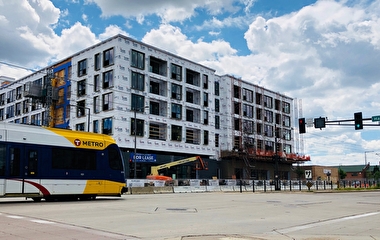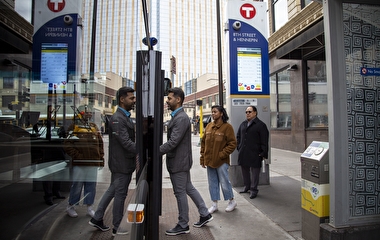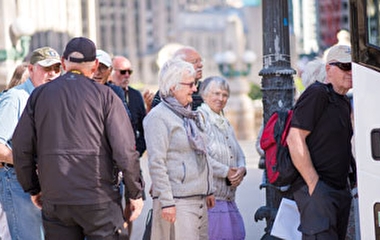Following the conference luncheon presentation, a panel of local experts built on the theme of innovation in a question-and-answer session. Panelists offered insights on how innovative technologies and policy approaches could affect Minnesota’s transportation network now and in the future.
What is your approach for planning for the future given that so much is uncertain?
“We want new technology and innovations to happen with us and for us and not to us,” said Jenifer Hager, director of transportation planning and programming with the City of Minneapolis. “We’re thinking about how the regulations, policies, and framework can be put together now so we’re ready for these new things to work for us when they come into our city and region.”
“For us, innovation comes in two ways,” said John Levin, director of strategic initiatives at Metro Transit. The first is in operating the agency’s core services safely, effectively, and efficiently, and the second relates to recognizing and filling gaps. “There’s innovation that we can do in terms of understanding needs, such as the exact time someone wants to make a trip, how we design the network, and how we deliver service really effectively,” Levin said.
Where does the room for failure come in?
“There’s no such thing as failed research, just a new way to ask the question,” said Frank Douma, director of the State and Local Policy Program at the Humphrey School of Public Affairs. In terms of policy, the key is identifying the failures we want to beware of and then finding solutions before those failures become a reality, he said. “The real question is how do we anticipate the worst-case scenario and create incentives to get to a different result?”
How can research support practitioners as they plan for the future?
Brendan Murphy, lead researcher at the U of M’s Accessibility Observatory, explained that his research can help practitioners understand the impact to people of a proposed change in the transportation network. For example, the Observatory can produce data and diagrams that evaluate whether a proposed network structure change will have a positive impact on accessibility. “These tools provide a high degree of value to practitioners,” Murphy said. “They let us analyze plans to inform the practice.”
Levin said a wide range of research is directly linked to Metro Transit’s operations, planning, vehicle development, and more. He also stressed the importance of research for gathering and analyzing data. “Data is lubrication for innovation,” Levin explained. “Doing the research to see patterns and understand what it’s telling us is essential to the work we’re doing in both delivering current services and planning for the future.”
What are the issues and trends you’re paying attention to?
Douma said he’s motivated by the increased activity in the private sector, especially related to the sharing economy. “What opportunities does this mean for new innovative policy? Where do we see the potential for market failures? How do we work to get the price right, and what questions arise if our focus is on a more equitable outcome?”
In Minneapolis, equity is also “a huge underlying theme,” Hager said. For example, equity is a component of the city’s changing approach to street design. “We have much more of a laser focus on people rather than cars. We want to build a sense of community and livability for all,” she said.
Murphy said he’s seeing an increasing focus on mixed-used, transit-oriented development in many cities. “It’s creating more walkable spaces, as long as we provide streetscapes and safety factors. We also need to pay attention to affordable housing, access to health care, and equitable destinations.”



